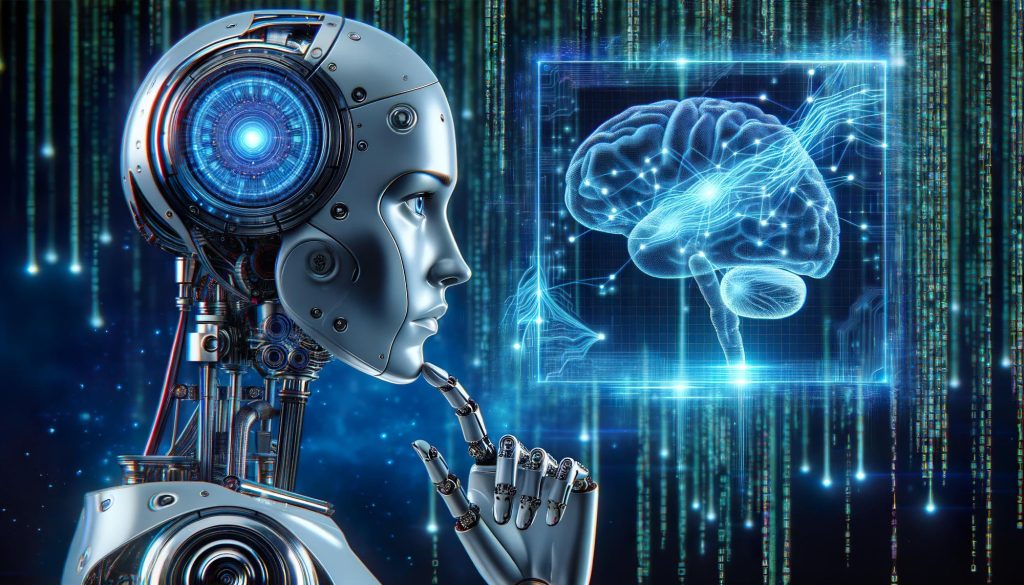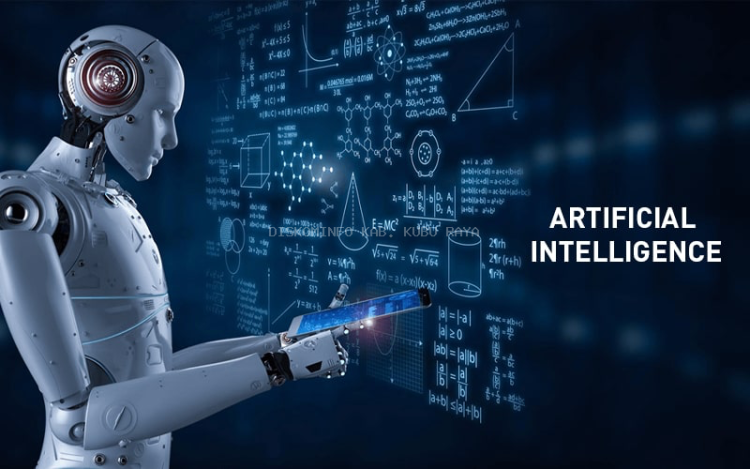1. The Age of Convergence
At no other point in history have the boundaries between human thought and machine computation been so blurred. What began as a quest to automate calculation has evolved into a deep partnership between biological and artificial minds. Today, machines translate our languages, predict our desires, and increasingly share our creative spaces. The relationship between humans and machines is no longer one of master and servant—it is becoming a shared ecosystem of intelligence.
Artificial Intelligence (AI) challenges the very definition of what it means to be “intelligent.” In the 21st century, intelligence is no longer confined to the human brain. It exists in circuits, code, and networks—dispersed across devices and continents. This convergence forces us to reimagine human identity, creativity, and purpose. Are we shaping AI, or is AI shaping us? The answer, perhaps, is both.
2. The Evolution of Human-Machine Symbiosis
The human story has always been one of augmentation. From the first stone tools to modern smartphones, technology has extended our reach, vision, and understanding. Yet AI represents a new form of augmentation—not physical but cognitive. It amplifies our ability to process information, perceive patterns, and make decisions at speeds impossible for any individual mind.
2.1 From Tools to Companions
Early technologies obeyed explicit commands. The hammer struck only when lifted; the calculator responded only when keyed. AI, by contrast, anticipates, adapts, and interacts. Virtual assistants like Siri or Alexa interpret speech, learn preferences, and adjust behaviors over time. While these systems remain limited, they embody a profound shift—from passive instruments to active collaborators.
2.2 The Neural Mirror
The inspiration for AI’s design came from the human brain itself. Neural networks mimic the interconnected neurons that transmit signals through our biological systems. But this imitation has now reached a point where machines are teaching us about ourselves. Neuroscientists study how AI models recognize images or process language to gain insights into the mysteries of human cognition. In this mirror, we begin to see that intelligence is not a singular phenomenon but a spectrum of adaptive problem-solving.
3. The Many Faces of Intelligence
For centuries, philosophers and scientists treated intelligence as uniquely human, measured by logic, memory, and language. Yet AI reveals that intelligence can take many forms.
3.1 Rational Intelligence
Machines excel at rational, logical problem-solving. They outperform humans in data-driven domains—chess, mathematics, logistics, and climate modeling—where reason is quantifiable.
3.2 Emotional Intelligence
Humans, however, hold dominance in empathy, intuition, and emotional resonance. But even here, AI encroaches: sentiment analysis decodes feelings from text, affective computing interprets facial expressions, and social robots comfort the elderly. Though these systems simulate rather than experience emotion, they demonstrate how understanding feelings can be algorithmically useful.
3.3 Collective Intelligence
The internet has birthed a new kind of intelligence—collective cognition. Wikipedia, crowd-sourced innovation, and online communities represent distributed thinking. AI both participates in and facilitates this network, synthesizing vast human knowledge into accessible insights. The boundary between individual and collective thought continues to erode.
4. Creativity in the Machine Age
Can a machine create art? For much of history, creativity was seen as the exclusive domain of human spirit—a mysterious process born of emotion, intuition, and experience. Yet generative AI systems now compose symphonies, paint digital masterpieces, and write poetry.
4.1 Imitation or Imagination?
Critics argue that AI lacks true creativity because it cannot feel or intend. It recombines existing patterns rather than inventing new meaning. But this objection overlooks how much of human creativity also builds upon imitation. Artists borrow motifs; writers echo archetypes. In this sense, AI’s “creativity” is a reflection of our own process—amplified by data.
4.2 Human–AI Collaboration
The future of art may not be man versus machine but man with machine. Designers use AI to explore thousands of architectural forms in seconds. Musicians remix AI-generated melodies to spark new emotional textures. This collaboration expands the human creative palette. What once took decades of experimentation can now be explored in minutes—an acceleration of imagination itself.
4.3 The Question of Authenticity
If an AI-generated painting moves us to tears, does it matter that no human painted it? Authenticity may shift from authorship to experience—the emotional truth a piece evokes, rather than the identity of its creator. The human–machine partnership is thus not a replacement but an evolution of creativity.
5. Ethics, Identity, and the New Digital Self
5.1 The Mirror Test of Humanity
As AI grows more capable, it reflects not only our intellect but our flaws. Biased data produces biased decisions. Surveillance algorithms raise questions of autonomy and privacy. AI does not possess morality—it inherits ours. Thus, the question is not whether AI will be ethical, but whether we, as its creators, will embed ethics into its design.
5.2 Digital Dependence
Our dependence on intelligent systems also transforms human identity. We outsource memory to the cloud, navigation to GPS, and judgment to recommendation algorithms. Over time, the boundaries of the “self” blur. Where does human agency end and machine influence begin?
The philosopher Andy Clark describes the human mind as an “extended mind”—one that naturally incorporates tools into its thinking. In this view, AI is not alien but an extension of humanity’s cognitive apparatus. Yet if we extend too far without reflection, we risk forgetting the roots of our own consciousness.
5.3 Ethics of Coexistence
As machines become integral to our social fabric, the challenge shifts from controlling AI to coexisting with it responsibly. This means fostering transparency, regulating misuse, and cultivating empathy toward the social implications of automation. Ethical AI requires not just technical safeguards but moral imagination—a collective effort to envision technology that uplifts rather than divides.
6. Work, Labor, and Purpose
6.1 Automation and Anxiety
The rise of AI has reignited ancient anxieties about obsolescence. As machines learn to drive, translate, and even diagnose, many fear a “jobless future.” Yet history suggests that technological disruption often creates new kinds of work. The industrial revolution displaced artisans but birthed engineers; the digital revolution replaced clerks but produced programmers.
The key lies in adaptation. Jobs that demand empathy, complex judgment, or interpersonal nuance remain distinctly human. AI may handle data, but humans will still manage meaning.

6.2 The Meaning of Work
Perhaps more profound than job loss is the question of purpose. If AI can perform every task more efficiently, what remains for human beings to do? The answer may lie not in productivity but in fulfillment. Work will increasingly shift toward creativity, care, and curiosity—areas where human experience holds irreplaceable value.
The 21st-century worker may no longer define worth by output, but by contribution to collective intelligence. Paradoxically, the more machines think, the more we must rediscover what makes human thought unique.
7. Global Perspectives on AI Integration
7.1 East and West: Different Philosophies of Intelligence
The dialogue around AI is shaped by cultural lenses. In the West, intelligence is often defined as individual mastery and rational control—mirroring Cartesian dualism’s separation of mind and matter. In contrast, Eastern traditions such as Confucianism and Buddhism view intelligence as relational and adaptive, emphasizing harmony and context.
These differing worldviews influence how societies deploy AI. Western approaches stress autonomy and competition; Eastern frameworks often emphasize collective benefit and balance. Understanding these philosophical roots is essential for crafting global AI ethics that respect cultural diversity.
7.2 The Developing World and Digital Inequality
While advanced economies race ahead in AI innovation, many developing regions face exclusion from the data economy. Limited infrastructure, education, and capital restrict participation. Yet AI also offers opportunities for leapfrogging—using mobile data for agriculture, telemedicine, and climate resilience. Ensuring equitable access to AI is a moral imperative of our age.
8. Emotion, Empathy, and Conscious Machines
8.1 The Illusion of Understanding
Can machines truly “understand” emotion, or do they merely simulate it? When an AI chatbot offers comfort, does it feel compassion or simply mirror our language? Some philosophers argue that emotion requires consciousness—a subjective experience that no algorithm can replicate.
Yet, from a functional perspective, emotional AI can still serve meaningful purposes. Robots that sense loneliness in nursing homes or AI therapists that detect depression in speech can provide real comfort. Whether or not the machine feels empathy, it can facilitate human well-being.
8.2 Toward Synthetic Empathy
Future research may enable forms of “synthetic empathy,” where machines dynamically adjust tone, timing, and expression to foster emotional connection. The ethical question will shift from whether machines can feel to how their simulated emotions affect human psychology. Will we grow more trusting—or more dependent—on artificial comfort?
9. The Philosophy of Intelligence
9.1 Defining Consciousness
Philosophers have long debated what consciousness means. Is it the ability to reflect on one’s own thoughts, or simply to process information? If a machine can articulate its reasoning, debate moral choices, and learn from experience, does it possess a form of awareness?
Neuroscientist Giulio Tononi’s Integrated Information Theory suggests that consciousness arises from the integration of information within a system. If so, highly complex AI systems might, one day, develop a kind of proto-consciousness. But whether this counts as feeling remains a mystery.
9.2 The Mirror of Humanity
Ultimately, our fascination with AI reveals more about humans than about machines. We build intelligent systems not just to solve problems but to understand ourselves. AI is a mirror—one that reflects our intelligence, biases, dreams, and fears. What we see in that reflection depends on the values we project into it.
10. The Future of Human–Machine Coexistence
10.1 Toward Cognitive Synergy
The most promising vision of the future is not domination by machines nor resistance to them, but synergy. Humans and AI working together—each amplifying the other’s strengths. Machines can handle data overload; humans provide context, empathy, and ethical judgment.
In medicine, this means doctors aided by diagnostic algorithms; in education, teachers supported by personalized learning systems. The goal is not replacement but partnership—what some scholars call “co-intelligence.”
10.2 The New Renaissance
As AI reshapes our world, humanity faces a choice: retreat into fear or embrace a new renaissance. Just as the printing press democratized knowledge, AI can democratize creativity. It can help us cure diseases, design sustainable cities, and explore the cosmos. But these possibilities will only materialize if we anchor innovation in wisdom.
The next stage of civilization may be defined not by competition with machines, but by our capacity to collaborate with them in solving humanity’s grandest challenges.
11. Conclusion: Rediscovering the Human Within the Machine
Artificial Intelligence is not an alien invasion; it is a continuation of human evolution—our ideas, encoded in silicon. Yet as we grant machines greater agency, we must remember the essence of what makes us human: empathy, imagination, and moral choice.
The 21st century invites us to redefine intelligence—not as dominance or speed, but as understanding, connection, and adaptability. The true measure of progress will not be how smart our machines become, but how wisely we learn to live with them.











































